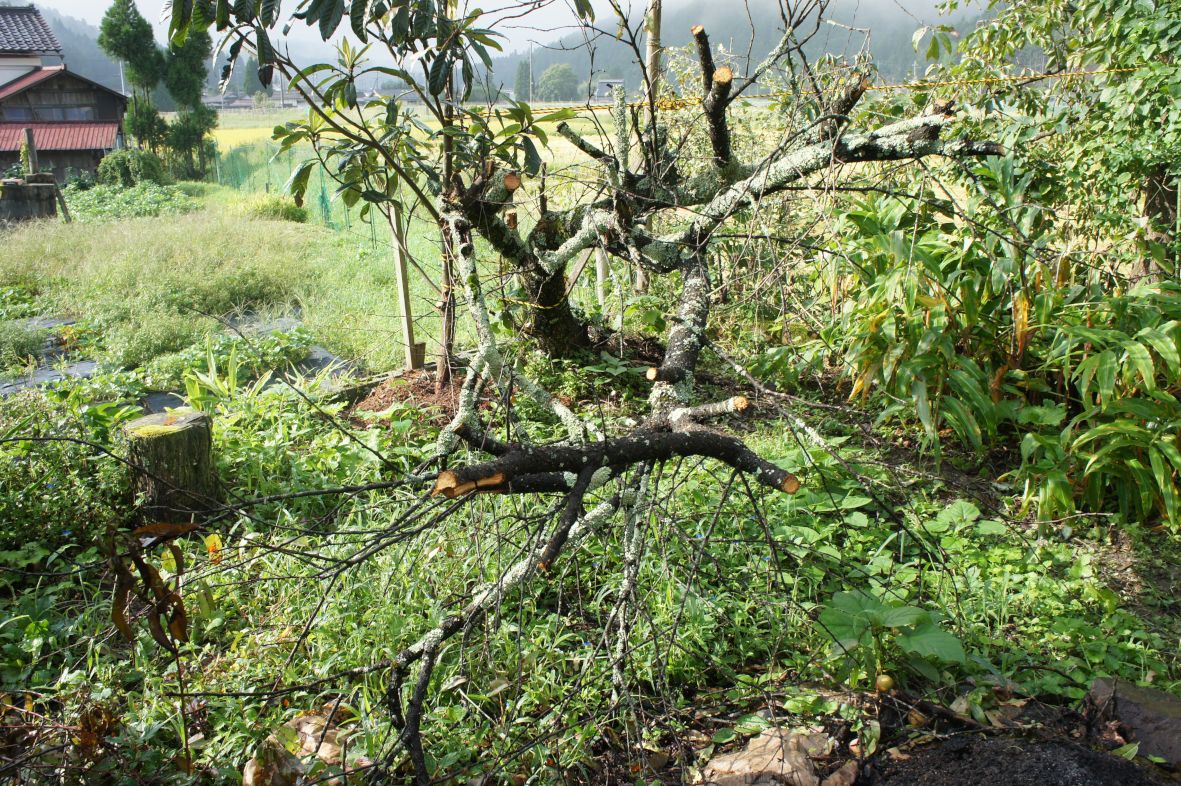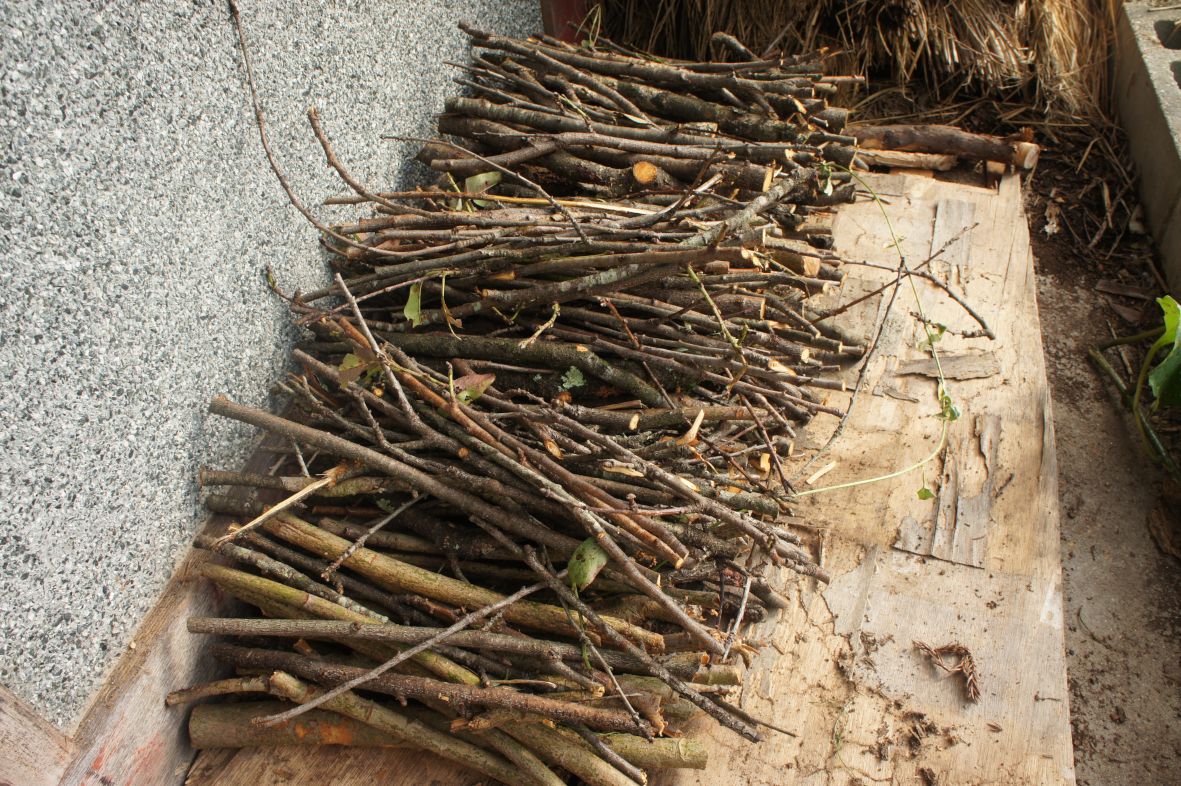Wwoofing in Kyoto

I recently went wwoofing for 10 days at Hello farm organics in Kyoto’s Keihoko district. It is in the north mountains of Kyoto, about 1.5 hour bus ride from the city. The place is a couple Zenryu and Ava living in village, managing farm size of about a hectare, growing organic vegetables and greens, and following vegan lifestyle. Checkout their website for more info!
Here I will give a brief of my experiences and things I learnt about organic farming.
The start
I was supposed to reach on Tuesday 4th, so I planned my travel on 3rd night to Osaka. But on 4th the big typhoon (21, Jebi) struck Osaka/Kyoto region, so all the transportation services were stopped that day, so I had to stay for a night in Kyoto city. The typhoon was a very strong one, and caused lots of damage in the mountain area of Kyoto, roads were blocked and the bus service to the remote town of Shuzan was stopped. On top of that the internet service and phone service to this town was disrupted for 2 days (they even spent a night without electricity). So I could not even communicate with Zenryu san, and had no idea what is the situation up there.
So my stay is Kyoto city was extended for 2 more nights. But the bus service did not resume even on Friday, so finally I went to a nearby train station, and Zenryu san came to pick up.
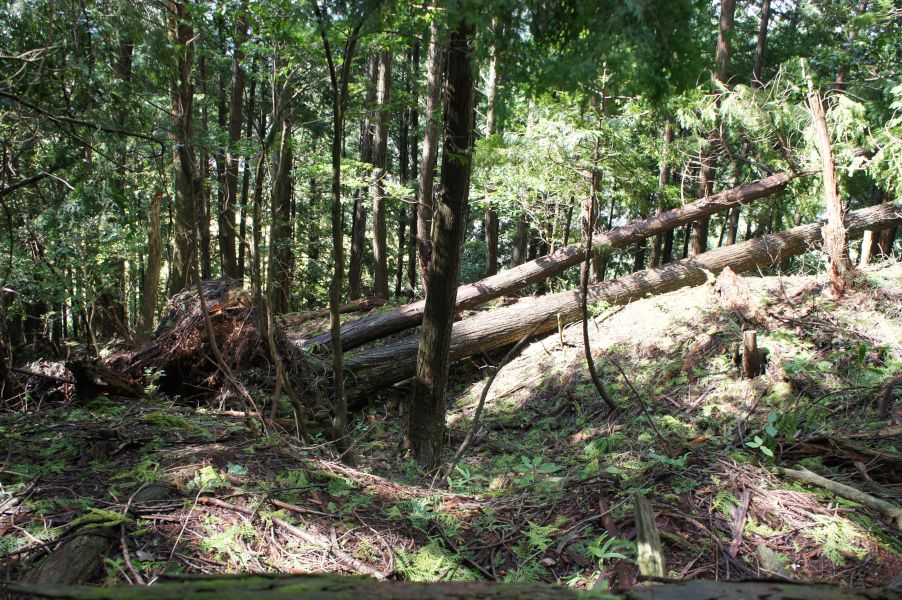
According to them this is the worst summer they have experienced in the last 7 years of farming. And I reached here right after the big disaster so an interesting experience was in store for me.
The field where they grow vegetables in summer is just 50m from the house. It is actually the land owned by neighbours who have let them grow vegetables here.

And they also have three greenhouses a little far from house for growing vegetables in winters. But a terrible thing happened there, one of the greenhouse was badly damaged in the typhoon. Last year also they had a greenhouse damaged due to winter snow, so they build a new from scratch. The new one was stronger so it survived, but the old one could not.
Wwoof schedule
Get up at 6:30-7:00, have a little breakfast (a slice of bread with coffee), and get ready to start work at 8. Then at 12 noon take a break, clean up, do lunch at 1, a little rest, and back to field at 3pm. The work continues till 6pm, after which take a shower, have dinner at 7pm. Apart from this need to do the dishes after every meal. Zenryu san does all the cooking.
The work
Weeding
Remove grasses and other weeds around the beds. The machine tools can be used to cut the grass on the area around the beds, but in between the beds the weeding has to be done by hand. Doing it by hand also ensures that the weeds are pulled along with roots, especially the grasses, as they grow again so fast if the roots are left.
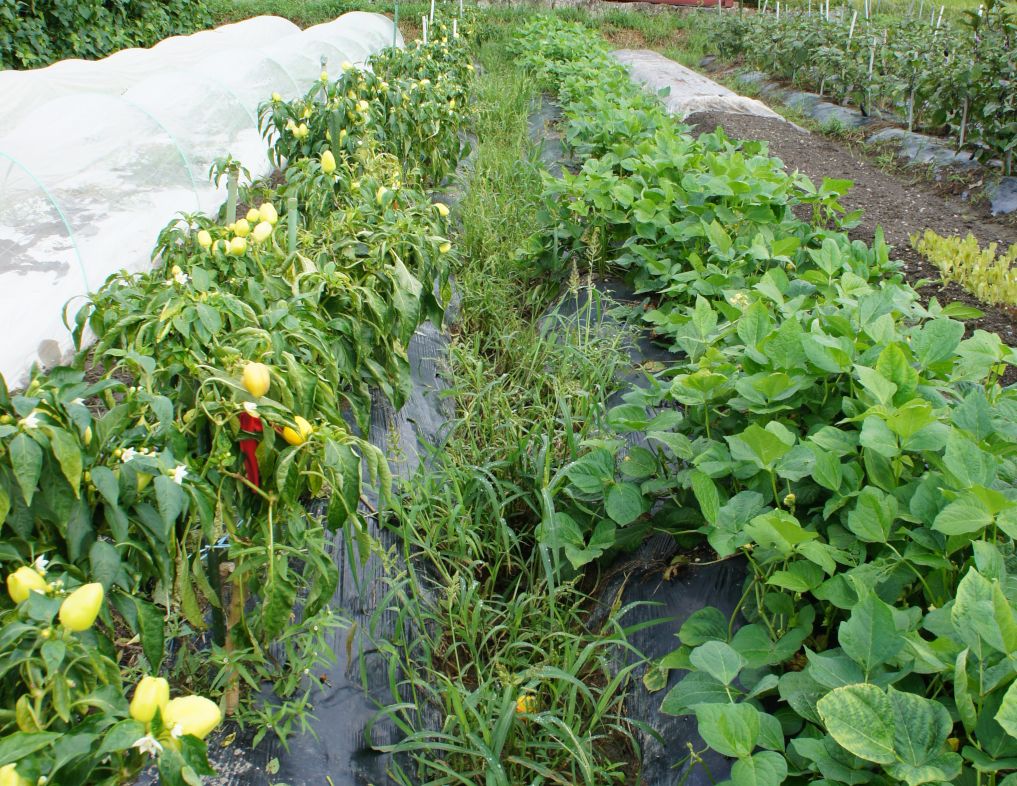
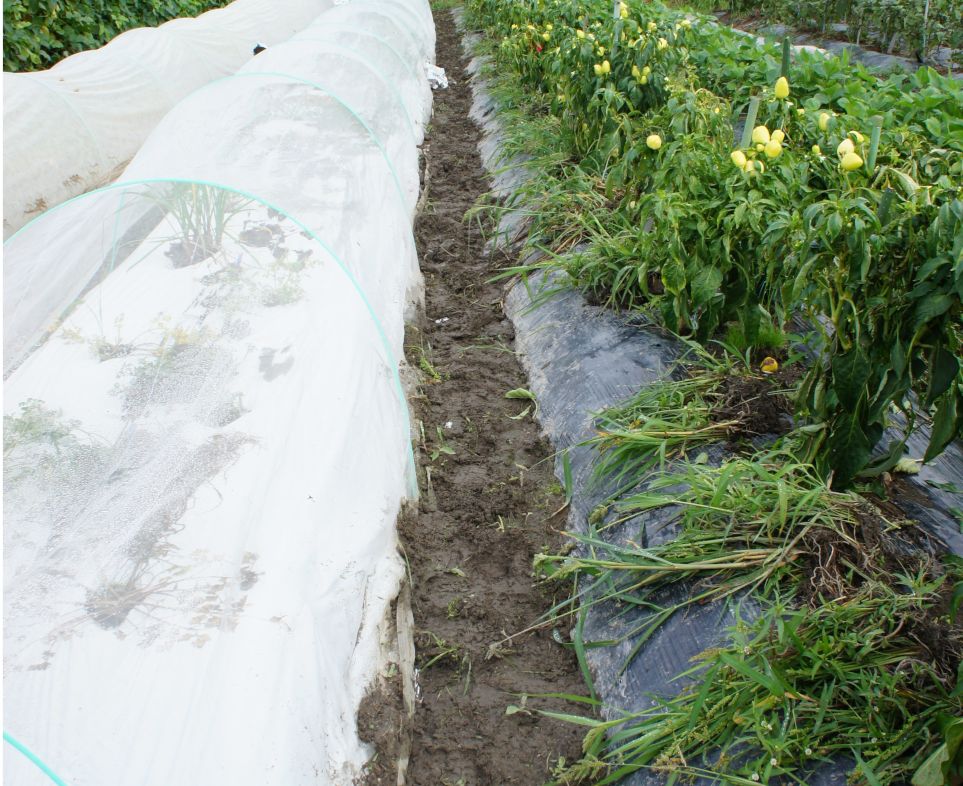


Pot saplings
The seeds are grown in a small area/container, and then the saplings are transferred to a pot, one in each. These pots are then kept in a greenhouse for a couple of weeks, and then planted in the field.

the pots used for this step need to be cleaned after use and kept in store for next season. This is to prevent the eggs of insects.
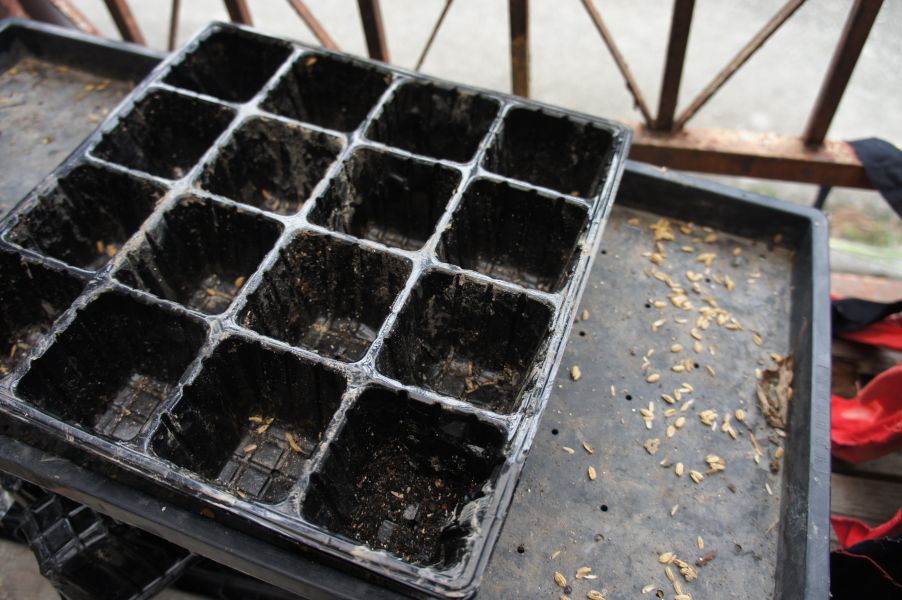

Bed prepare
- Clear weeds
- Use the tilling machine to till the whole area and collect soil together in rows
- Use the hand tools to collect soil and give rows a proper shape (this is very labor intensive step)
- Add stuff like compost and neem powder
- Use the tilling machine to mix all this and level soil in a row
- Cover the bed with plastic
The below area was planted with a grass useful as manure and later the grass was cut and left in it to get composted. Initially the a part of the area on left was also covered by the grass as shown in the right part of image.
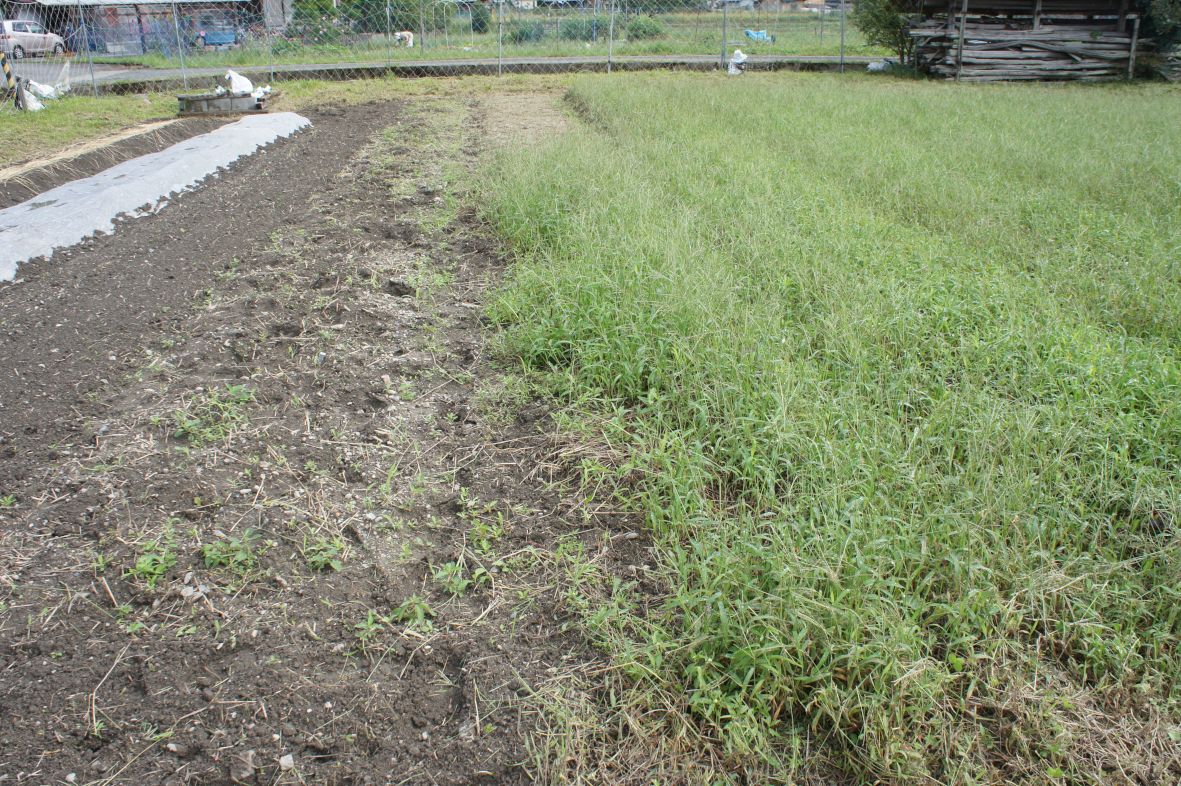
The tilled soil was then accumulated in the form of rows, one of them is kept for use later, so it was covered with transparent plastic.
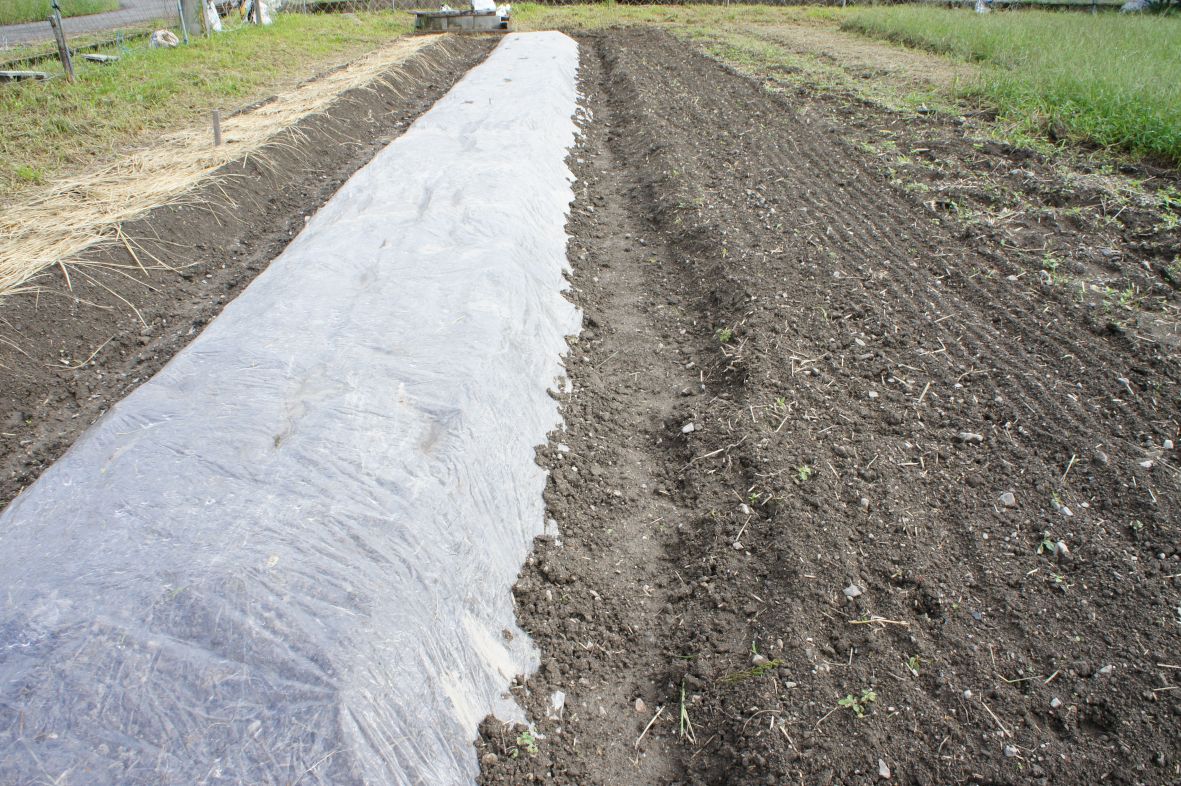

Here holes were made 20cm apart in three rows, then compost was added, followed by neem powder. This was not planted at that time due to rains.

In case of planting potatoes the bed is not covered in plastic, instead rice straws are put on top to preserve moisture and prevent weeds. A few weeks later there might be a need to cover it with plastic to increase soil temperature. The potatoes were already sprouting when planted, and their texture became a little soft.
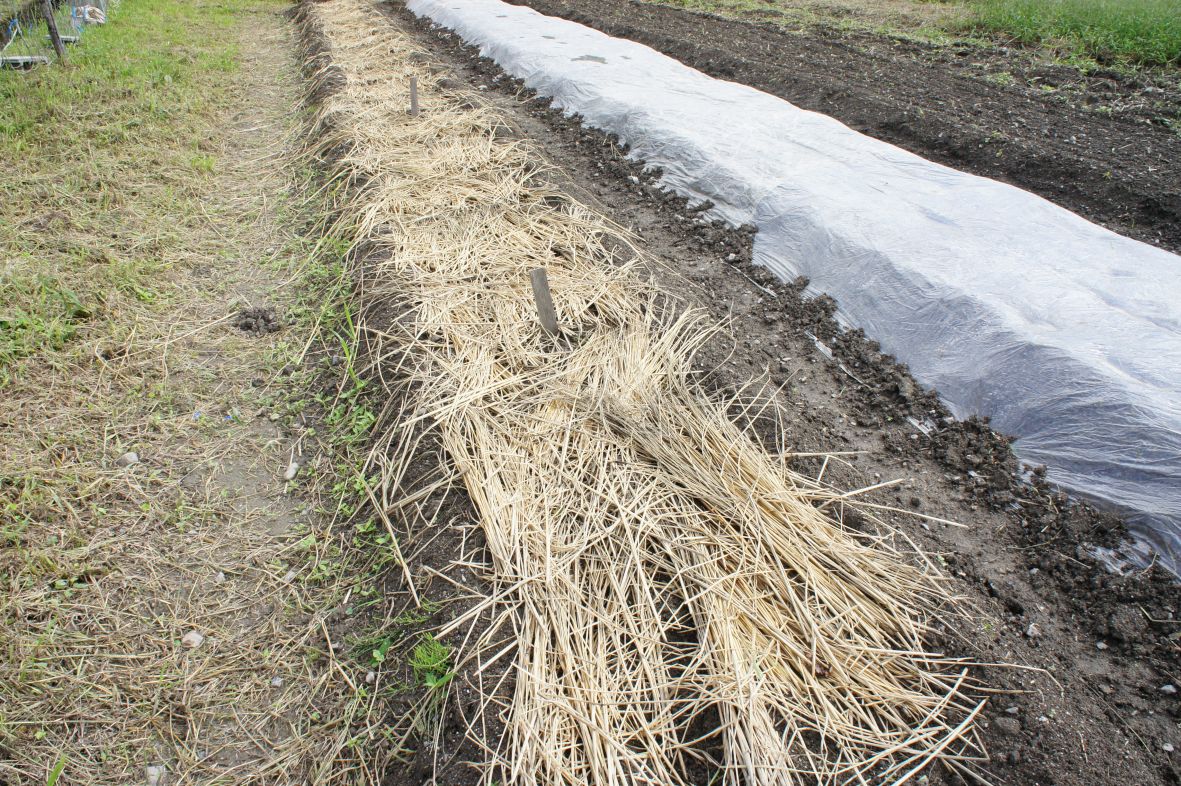
Plant saplings
Usually when the bed has been prepared, a hole is dug in the plastic and soil beneath, handful of compost is added, then neem powder is added on top. The plant saplings are then placed on top of that, and the soil around them is firmly pressed to a level surface. Then finally the plants are watered with the water having a little bit of EM (microbial concentrate) and charcoal liquid.
For lettuce there is a special step required before planting in the field. The potted plant (along with its soil) is wrapped in a newspaper on sides such that the newspaper is an inch higher than the soil level, and covers the plant on all sides. This is done to prevent an special kind of insect, which crawls on the soil, to reach the lettuce. The planted bed is then covered with a net material with tiny holes.
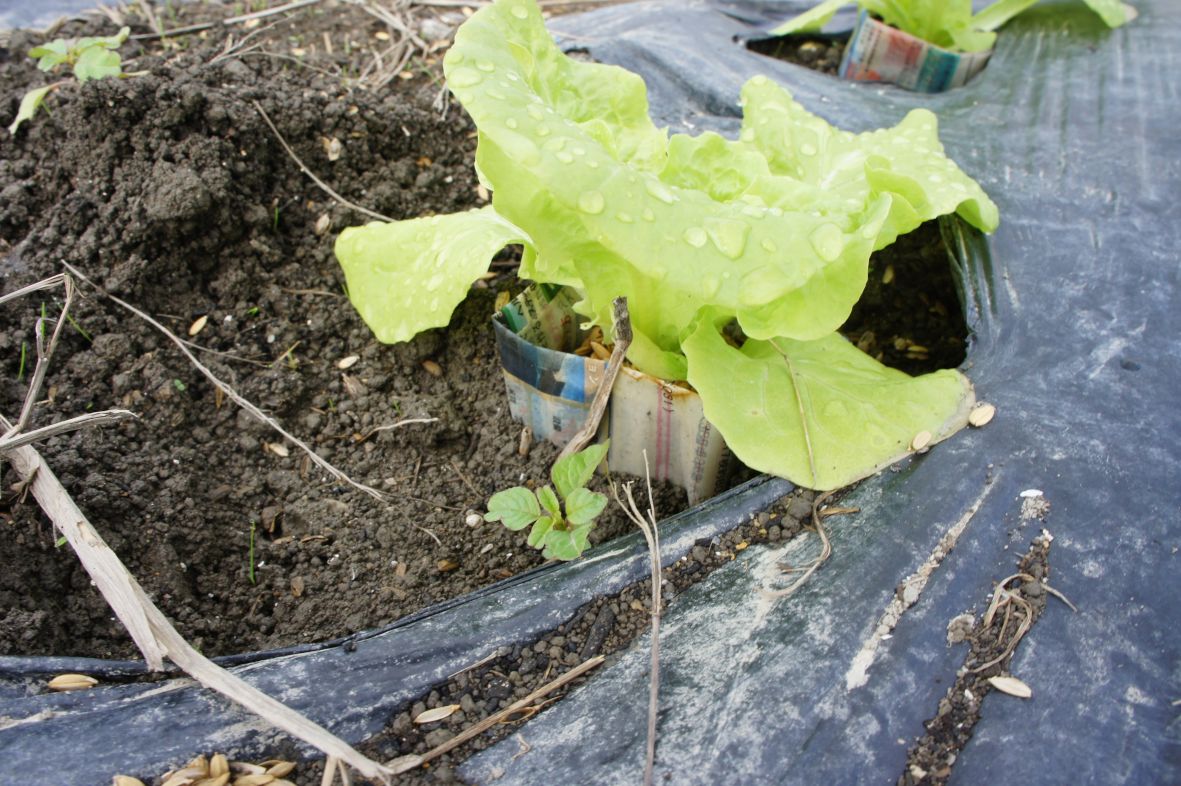
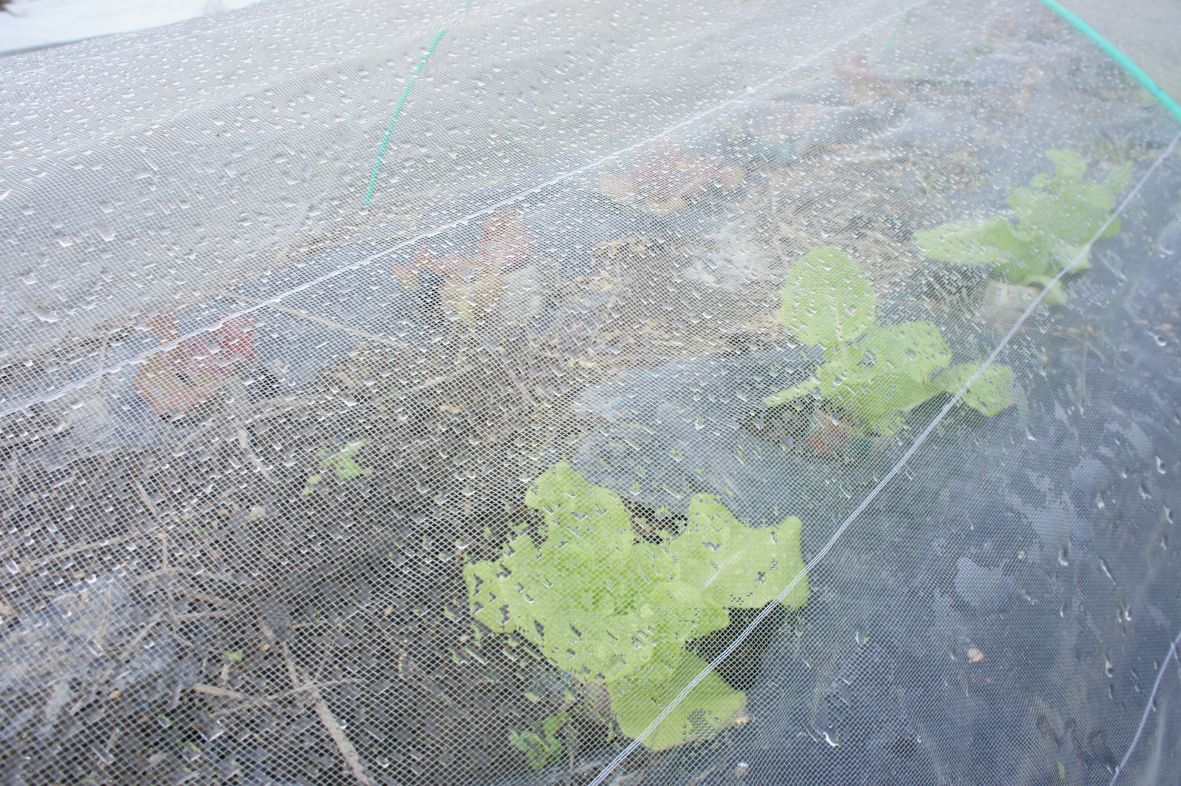
Harvest
Tomatoes
We tried to harvest a little ripe tomatoes, but in this weather most of them were destroyed. About 30% fell of the plants and rot on ground, 50% developed patches or lines, or their skin cracked open due to rain, so these cannot be sold. I think less than 20% were actually harvested.


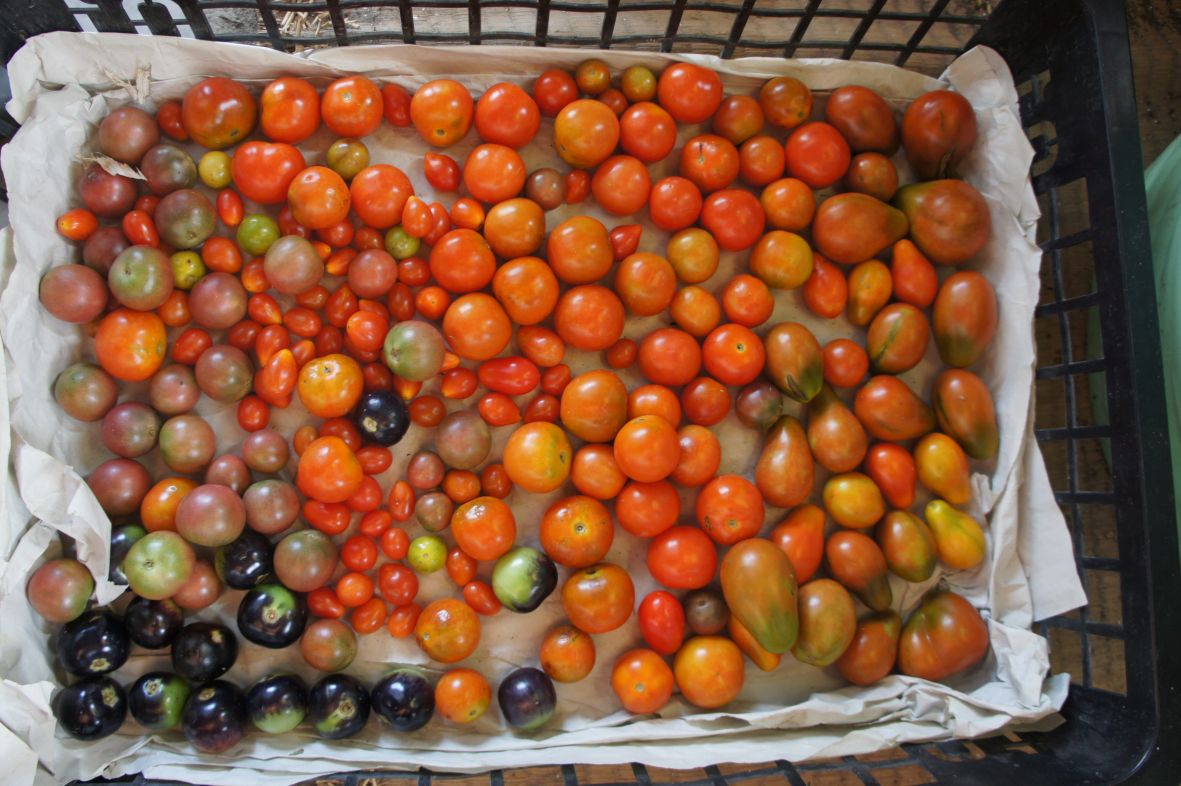
Capsicum
There was much better harvest of capsicum, but still had lots of waste.
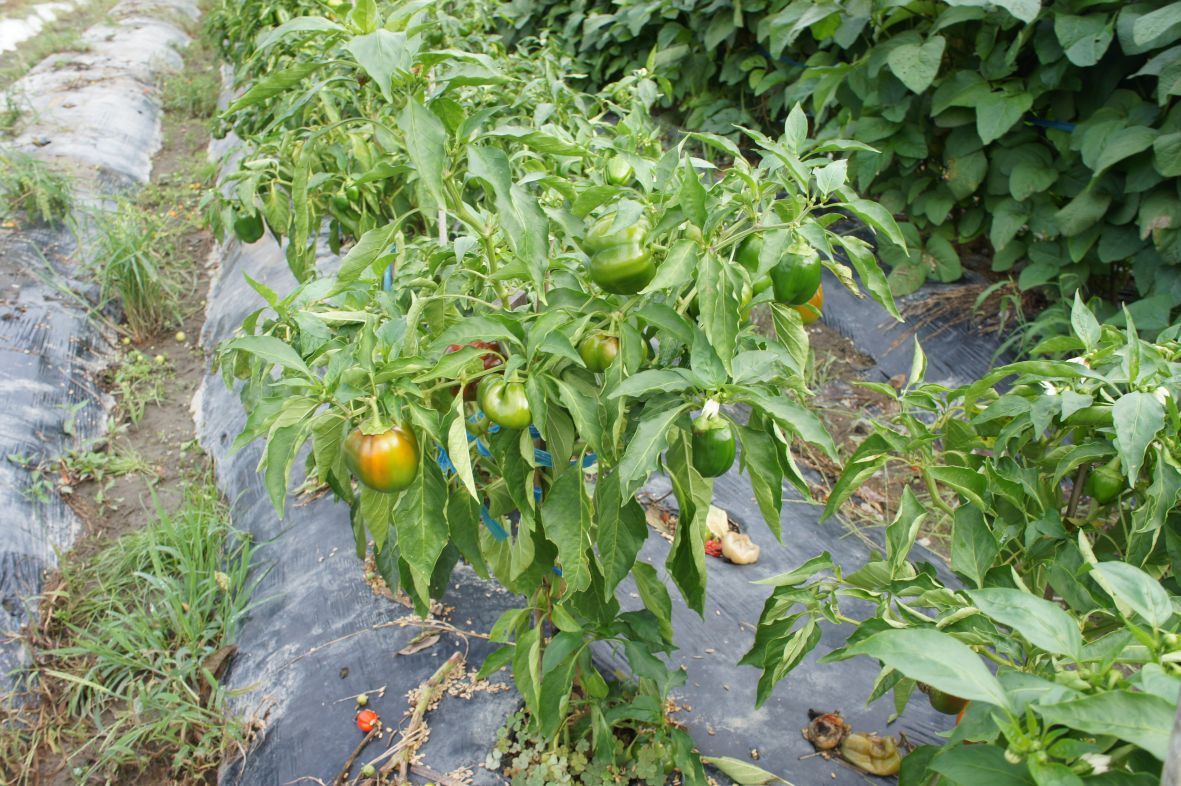
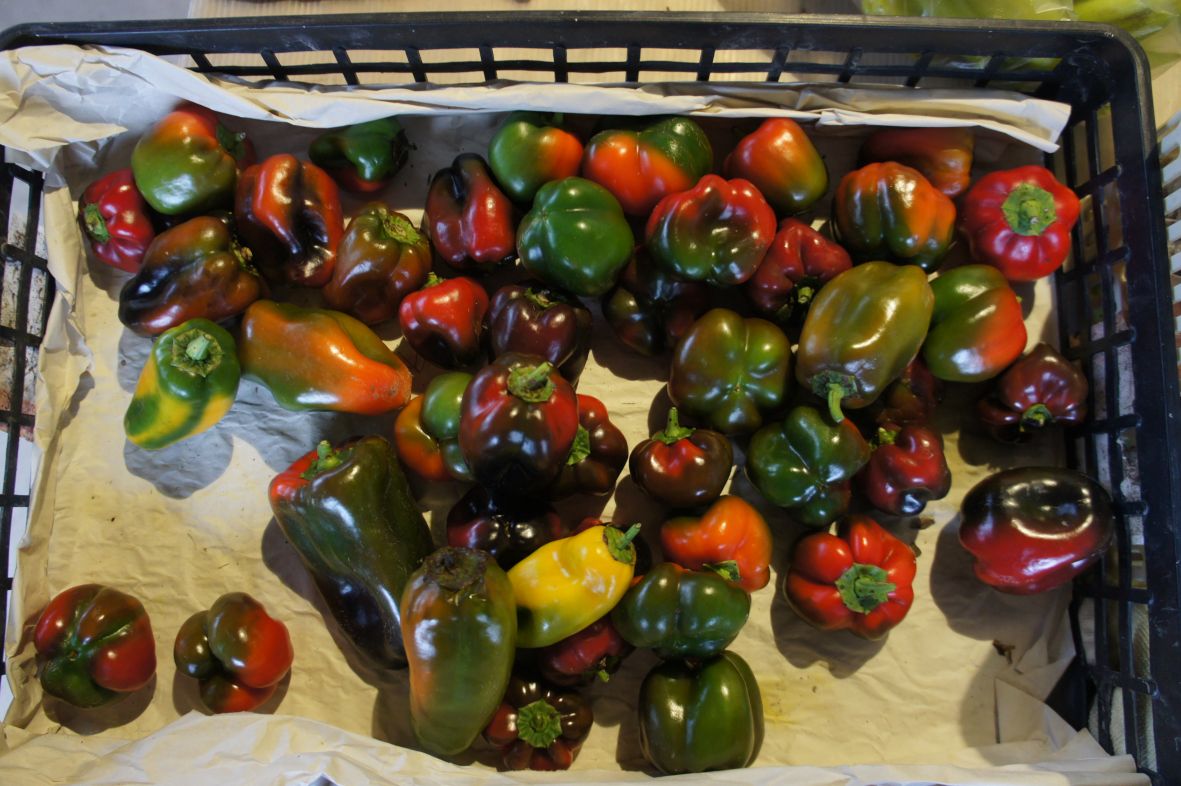
Pumpkin
The pumpkins were harvested once in a week. The ones developing yellow patches (due to surface contact with ground, or other things) were harvested, irrespective of its size.
They were first cleaned with a wet cloth to remove all the mud, especially from its ends, and then stored for a couple of weeks.

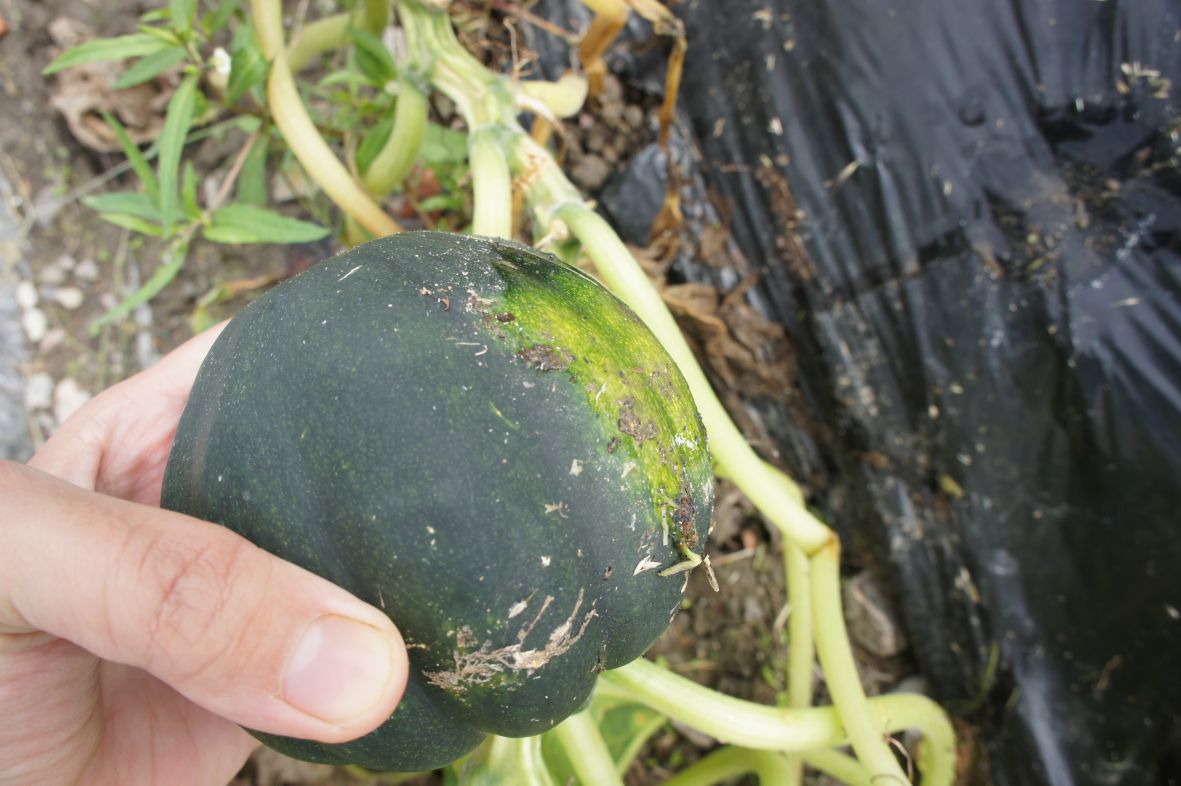
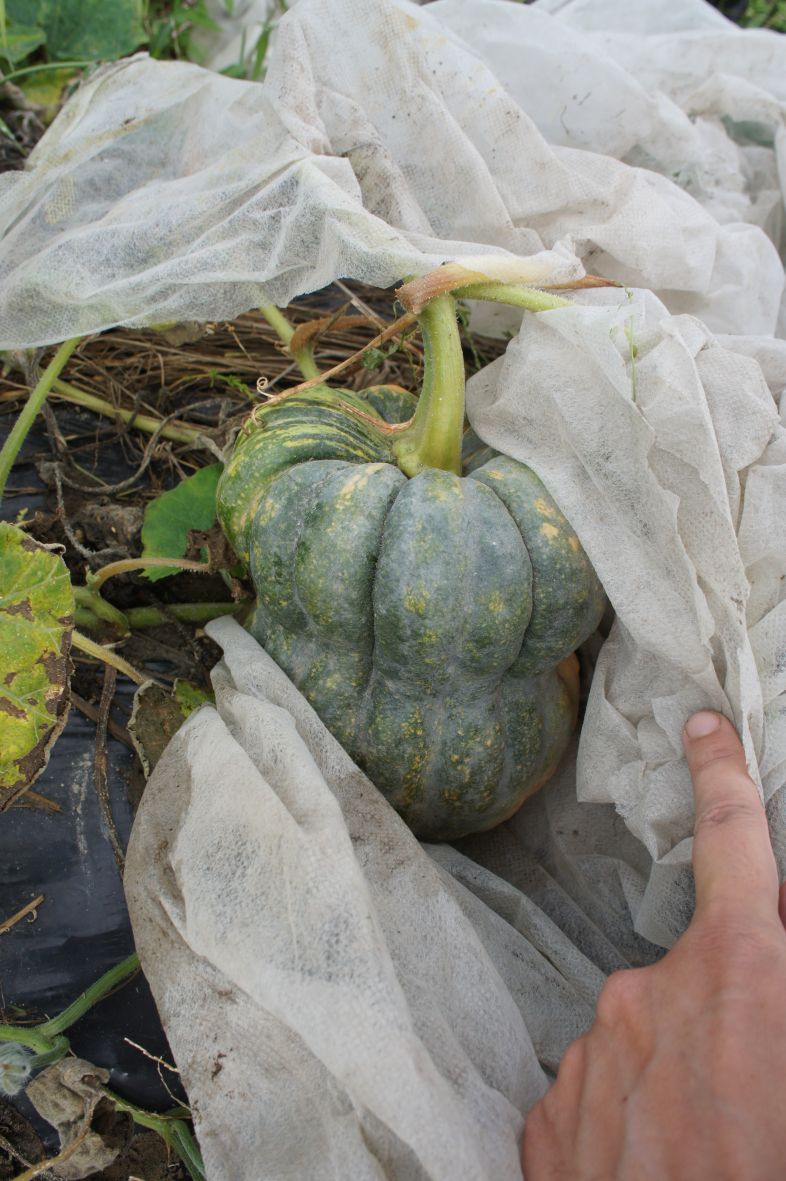
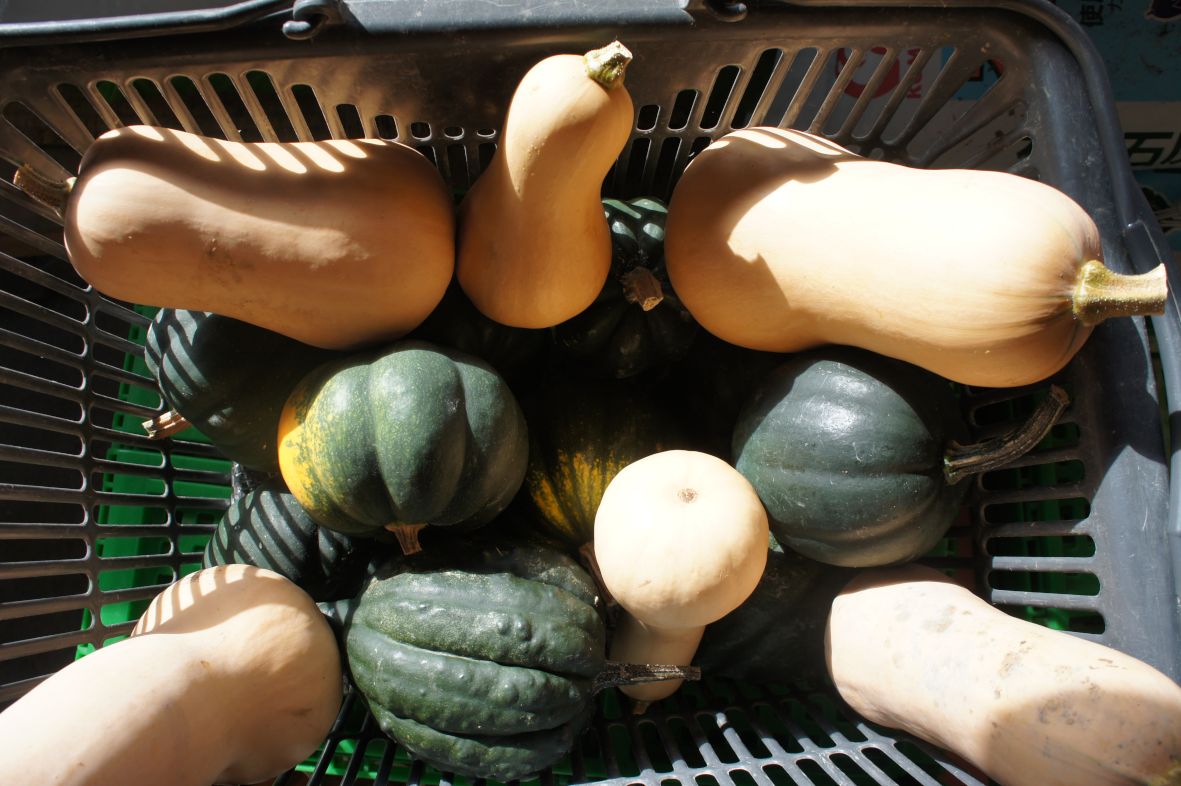
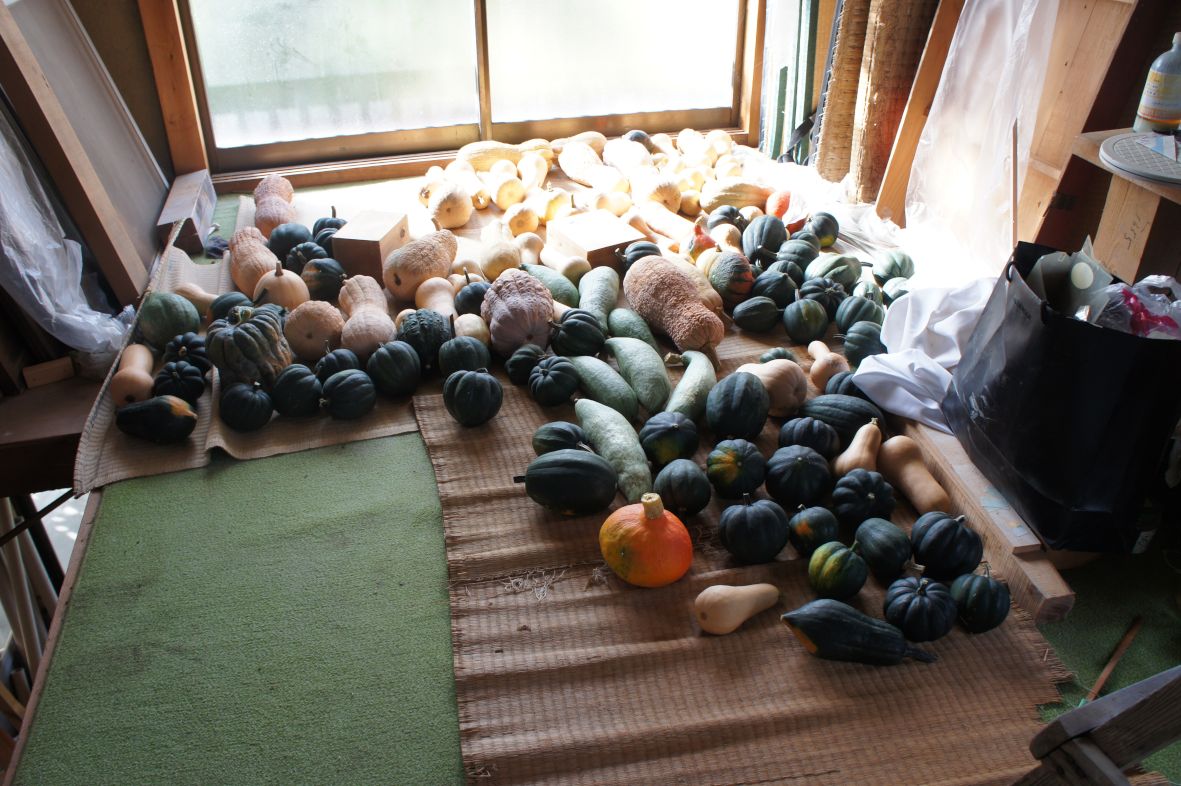
Eggplant
Eggplant was the one able to survive best this weather. This is perhaps one of the reason we ate it everyday, in every meal :D
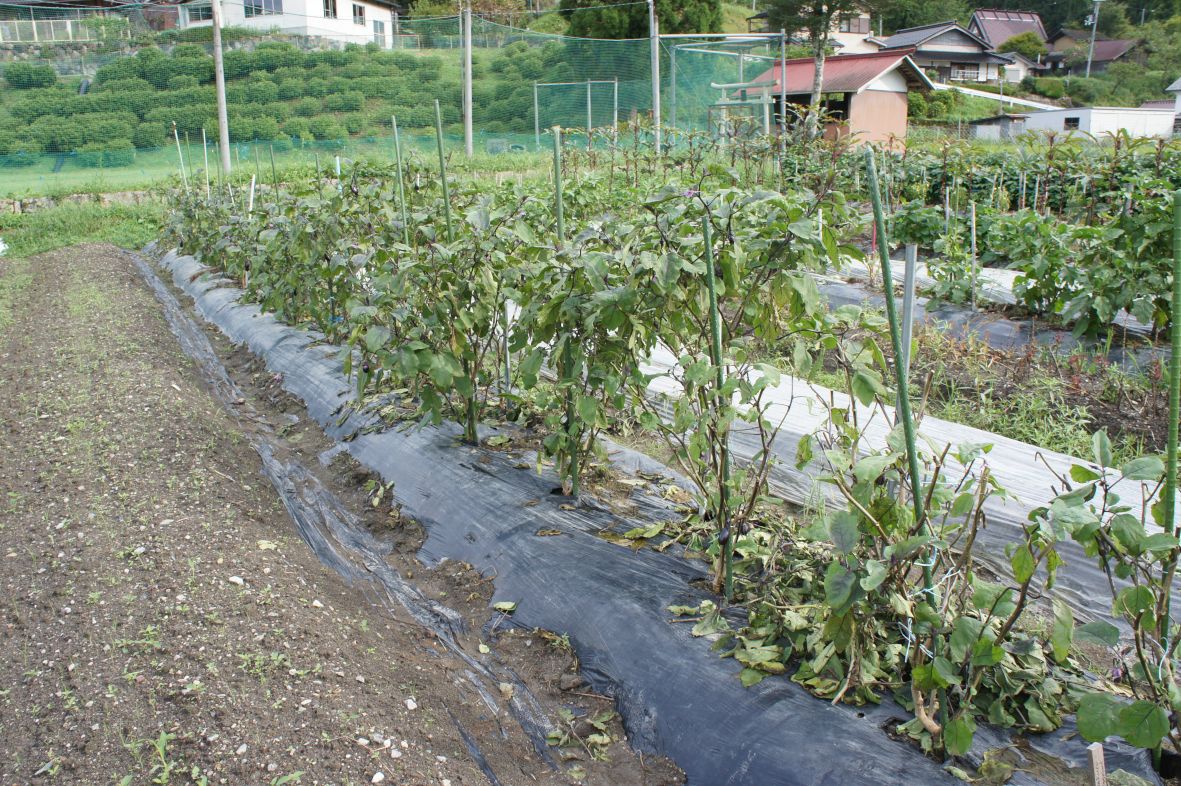
Some plants had problems, like they were not producing good fruits. So they were pruned, and compost was added to their roots. They are supposed to grow back again in few weeks and produce more fruits.
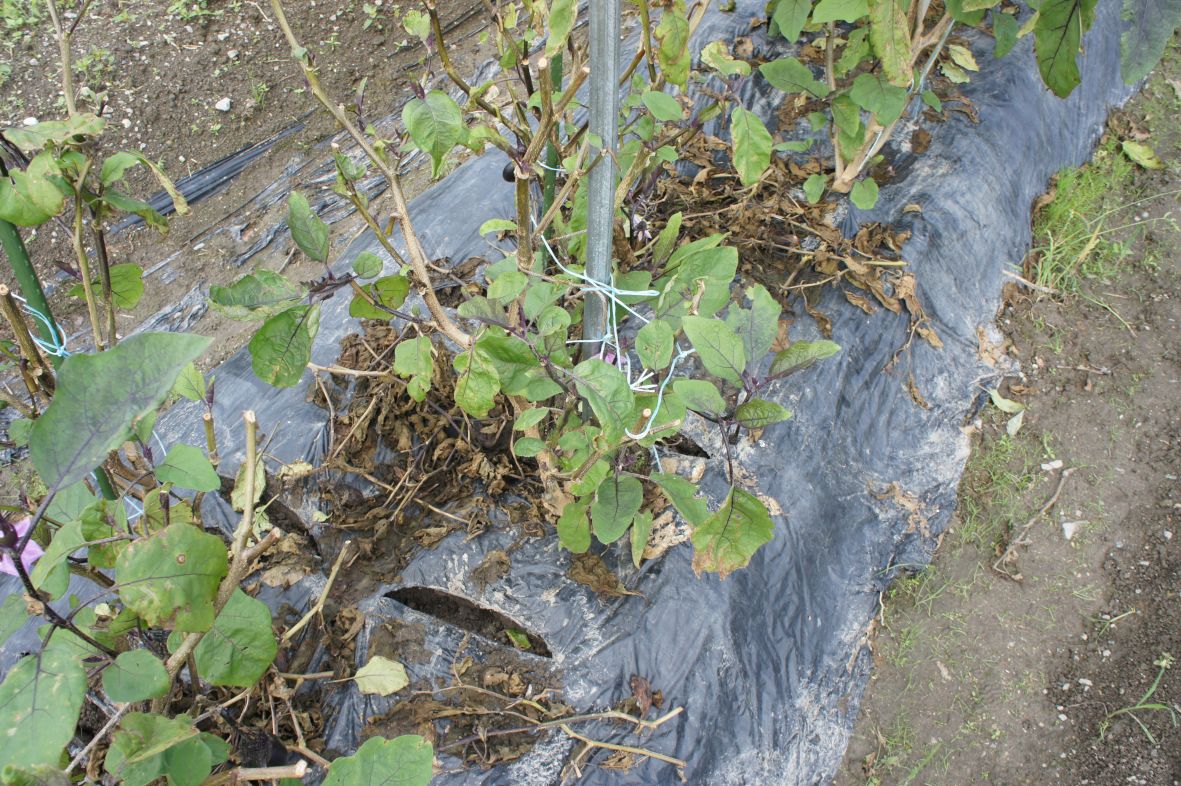

Others
For baby salad mix a number of herbs/greens were harvested like parsley, lettuce. This is also their main production in the winter months.
One day I harvested mint, we needed about 100 gm from a bed of 5sqmt. There were 4 kinds of mint plants but it was very difficult to get good leaves. Mostly the older leaves ere broken, have holes or some kind of fungi on its back. It took me almost an hour to do this.
Materials used for cover
Black plastic - This is a thin opaque plastic material, easy to make holes. It is used to cover the beds directly and holes are made in it wherever one needs to plant. It prevents weed growth in the bed, and prevents the underlying soil from rain also.
Sometimes there is a white opaque plastic also, I think it is slightly stronger material.
Transparent plastic - This is used to cover a freshly prepared bed, when it need time to get ready. It covers the soil completely and it has no holes or air passages. It increases the temperature in the soil below and helps disinfect (thermophilic composting).
A translucent breathable material - This is a special material that does not allow any insects to pass through. Though air and little water can go through it. It is perhaps the best material to cover planted beds, but it is expensive and very fragile. It can be used to cover the soil directly, but mostly it is used to cover the plants, especially the delicate ones like baby salad and herbs.
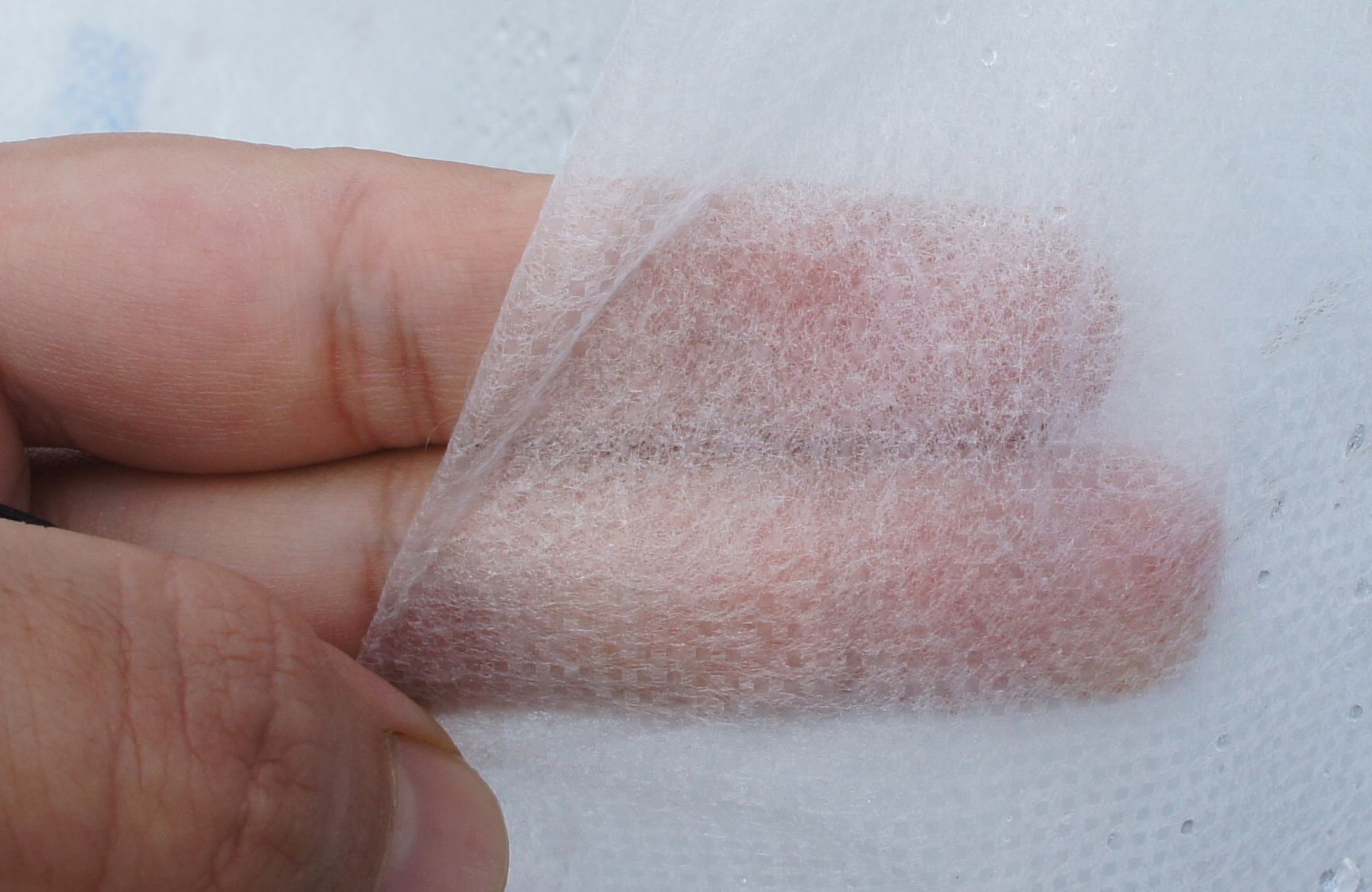
- Net - This material has tiny holes in it and can allow little insects to pass through. It is the most common material to cover a planted bed. It is much more stronger than the translucent material.
Support Structure types.
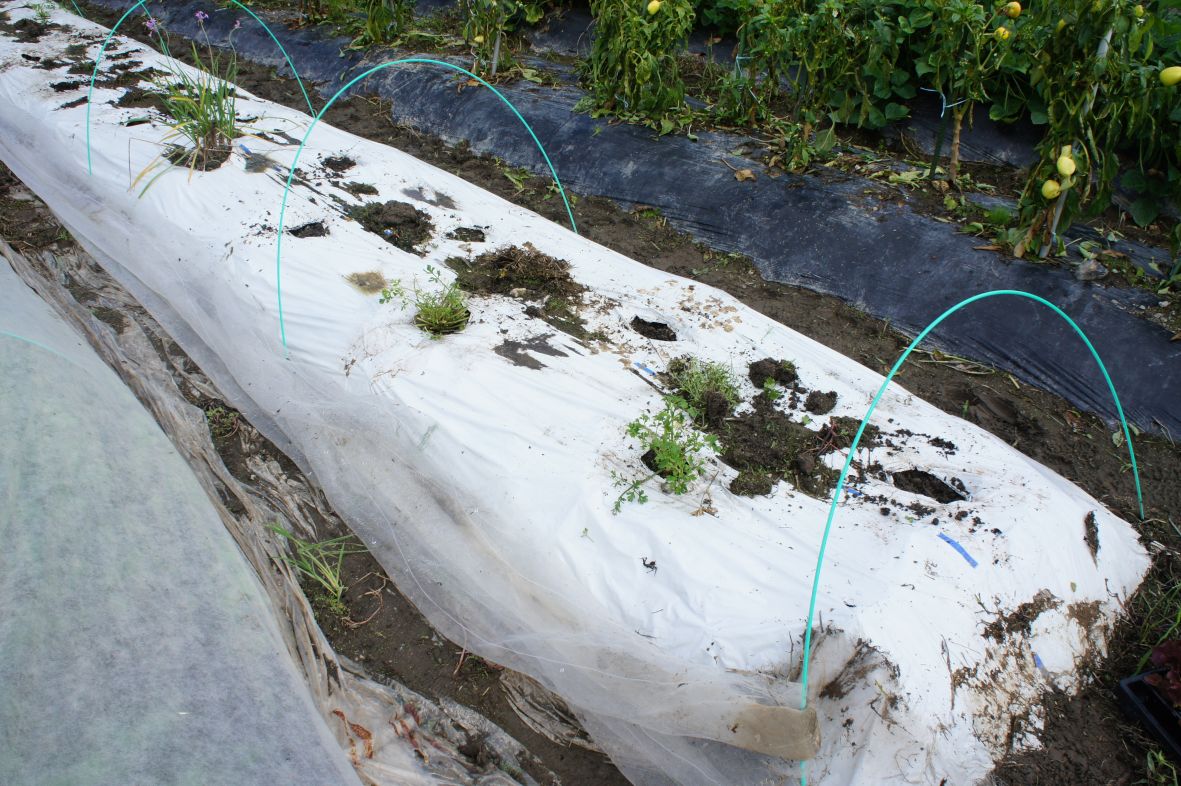

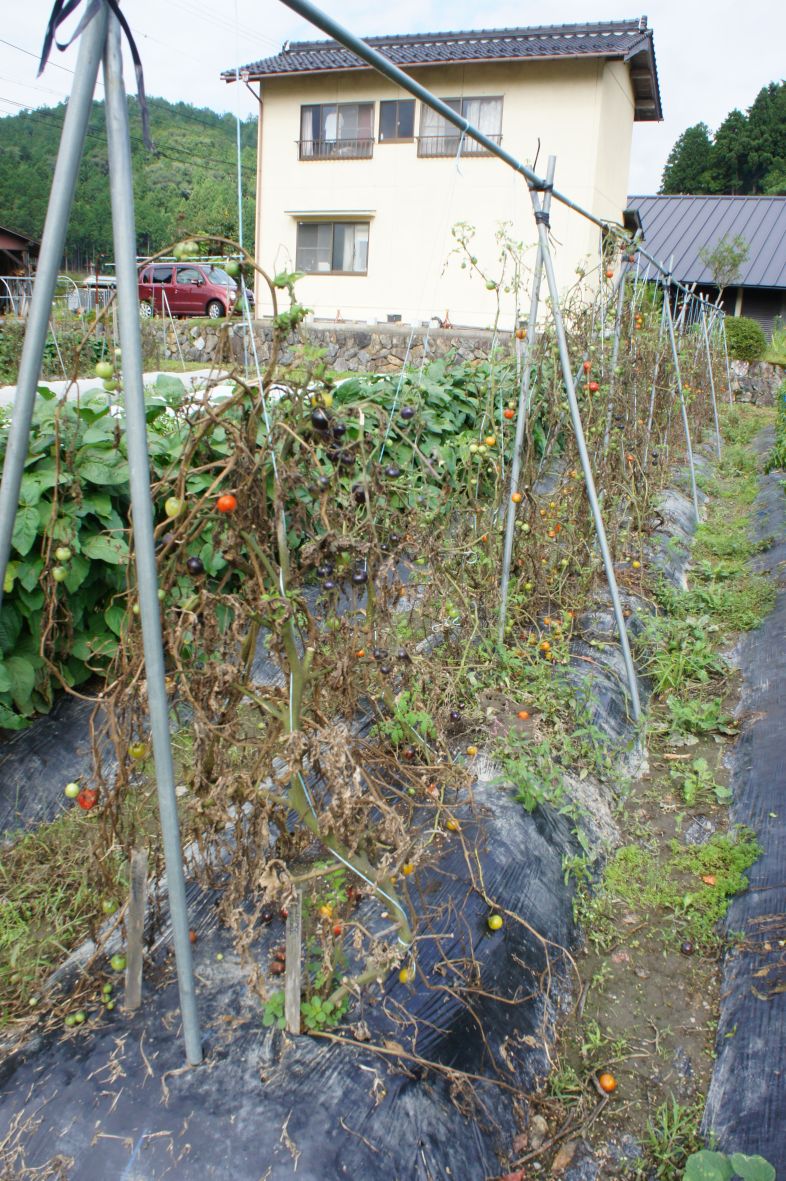
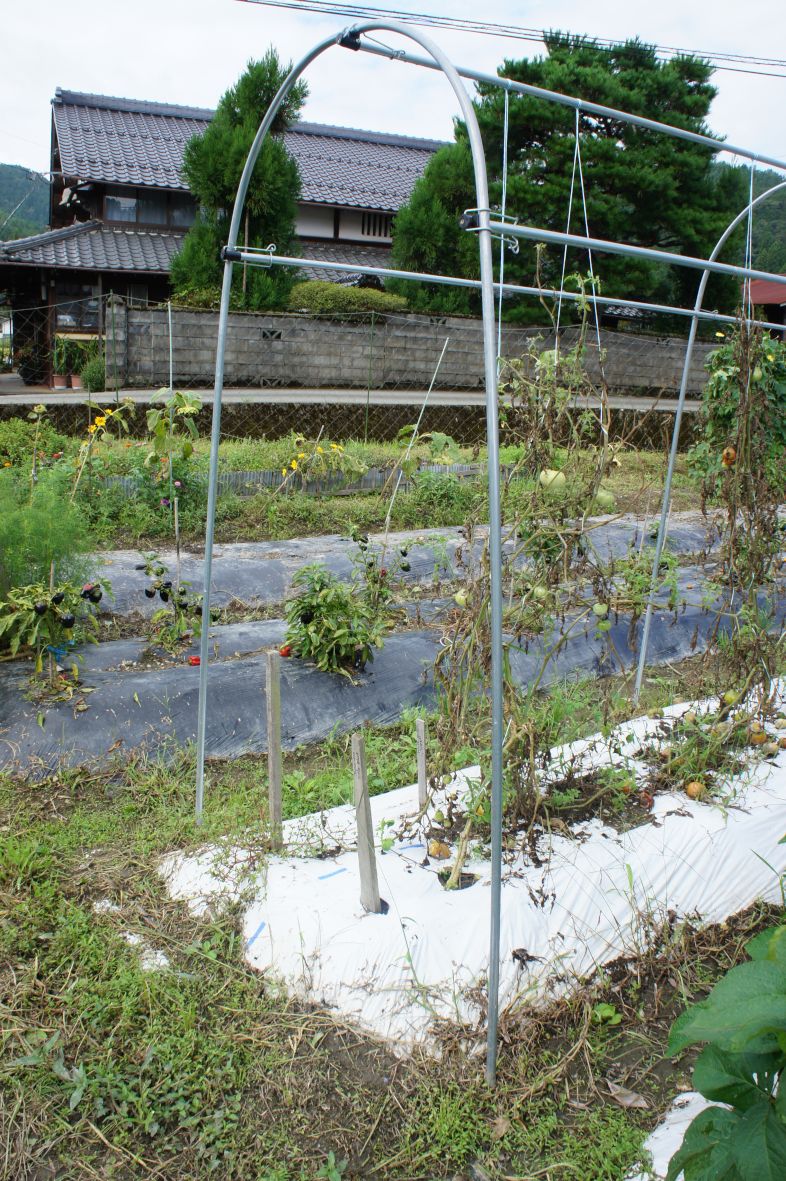
Wood cutting
I also did some wood cutting one evening. The peach tree in their home garden fell due to the typhoon, and it had to be cut. I cut some branches into smaller size pieces for use in the water heater.
